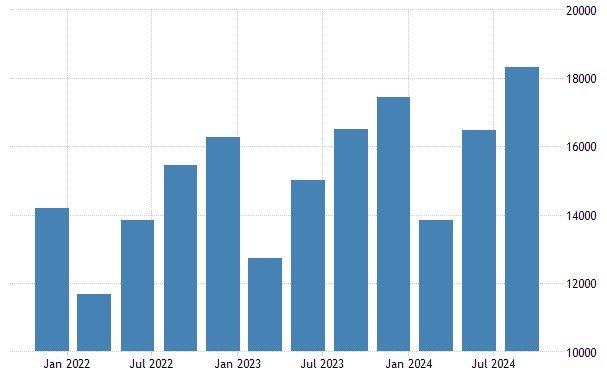Georgia’s GDP for 2023 has reached GEL 90.88 billion (approximately $28.78 billion), with the capital city, Tbilisi, contributing over half of the country’s economic output.
According to the latest figures from Geostat, Tbilisi led the charge, accounting for 52.7% of the total GDP. This is a significant figure, showcasing the capital’s dominant role in Georgia’s economy. Other regions followed with notable contributions, including Adjara at 9.5%, Imereti at 7.8%, Kvemo Kartli at 7.5%, and Samegrelo-Zemo Svaneti at 5.4%.
Tbilisi’s Economic Powerhouse
Tbilisi, the economic heart of Georgia, continues to show its dominance across various sectors. The city’s largest economic contributors are wholesale and retail trade, as well as motor vehicle repairs, making up 24.6% of Tbilisi’s total economic output. Real estate follows at 11.6%, while construction accounts for 9.1%.
Tbilisi’s role in driving Georgia’s economy is clear, with these sectors playing an essential part in maintaining the city’s status as the primary engine of economic growth.

Regional Contributions
While Tbilisi stands out, other regions also contribute to Georgia’s economy, with varying sectoral strengths. Adjara, for instance, has a strong focus on construction, contributing 14% to its regional GDP, along with a notable 13.8% from real estate. Wholesale and retail trade in Adjara contributes 10.5%.
Imereti’s economy is more centered on agriculture, forestry, and fishing, which make up 11.9% of the region’s GDP, along with manufacturing at 11.2%. Real estate is also significant in Imereti, contributing 10.8%.
Kvemo Kartli’s GDP is largely driven by manufacturing (18.9%) and agriculture (15.5%), with public administration and defense also contributing 8.9%.
Regional GDP Breakdown (2023):
| Region | GDP Contribution | Key Sectors |
|---|---|---|
| Tbilisi | 52.7% | Wholesale & Retail Trade (24.6%), Real Estate (11.6%) |
| Adjara | 9.5% | Construction (14%), Real Estate (13.8%) |
| Imereti | 7.8% | Agriculture (11.9%), Manufacturing (11.2%) |
| Kvemo Kartli | 7.5% | Manufacturing (18.9%), Agriculture (15.5%) |
| Samegrelo-Zemo Svaneti | 5.4% | Agriculture, Forestry (exact sectors unspecified) |
As these figures show, while Tbilisi remains the economic powerhouse of Georgia, other regions also have specialized sectors that contribute significantly to the national economy.
The growth in key industries such as construction, real estate, manufacturing, and agriculture in various regions indicates a diversified economic landscape, making Georgia’s economy resilient in a global context.
